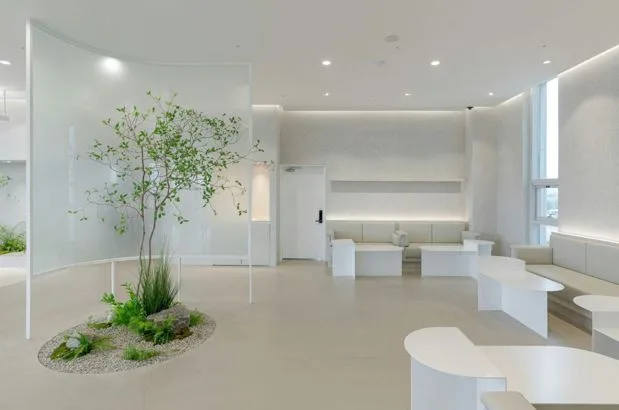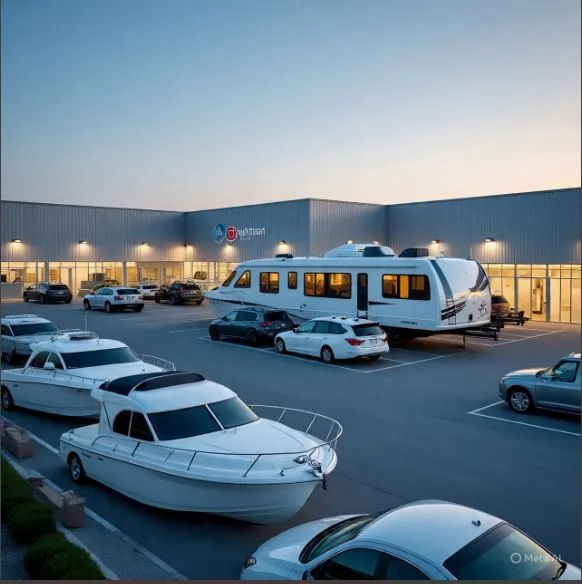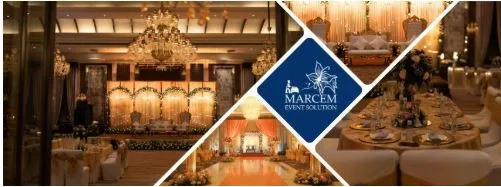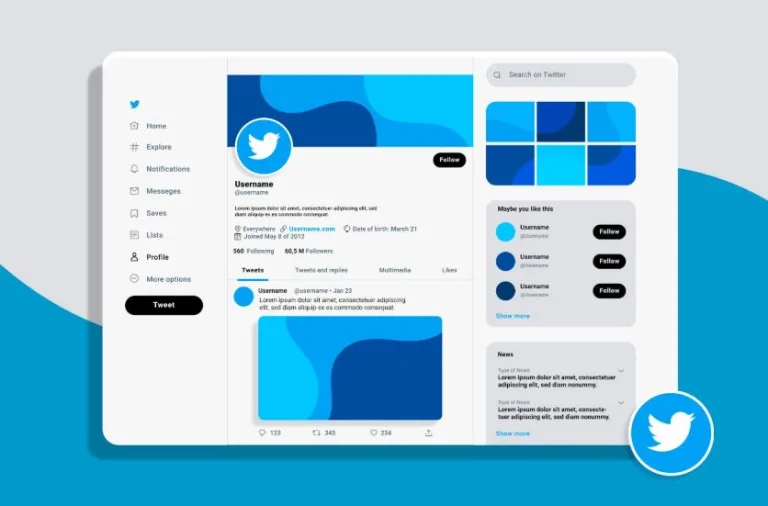The Future of Commercial Spaces: Smart Interiors and Design Efficiency
Walk into a cutting-edge commercial space today, and you might feel like you’ve stepped into something slightly otherworldly, surfaces that seem to shift and adapt, walls that respond to touch, and lighting that anticipates your needs before you voice them. These spaces have an almost alien-like quality in their seamless integration of technology and design.
Yet beneath this futuristic veneer lies surprising intelligence: systems that learn patterns, materials that actively improve air quality, and layouts that genuinely understand human behavior. The commercial interiors of tomorrow aren’t just smart—they’re remarkably intuitive, blending innovation with a deep understanding of what makes people comfortable, productive, and engaged.
The Changing Landscape of Commercial Interiors
From Traditional to Smart Spaces
Commercial interiors have undergone remarkable evolution over the past decade. Offices that once consisted of rigid cubicles and closed-door offices now embrace open, flexible layouts that can transform throughout the day. Retail spaces have evolved from simple product displays into immersive brand experiences. Healthcare facilities are shedding their clinical coldness in favor of warm, welcoming environments that reduce patient anxiety while maintaining impeccable hygiene standards.
The common thread connecting these changes is adaptability. Modern commercial spaces must serve multiple functions without requiring complete renovation every time needs shift. A meeting room might transform into a training space, then a quiet zone for focused work. A retail floor can reconfigure its layout for seasonal displays or special events. A clinic waiting area might double as an educational space or wellness lounge.
Multi-use spaces have become the standard rather than the exception. This flexibility isn’t just convenient, it’s economically essential in markets where rent and operational costs continue climbing while business needs fluctuate rapidly.
Drivers of Change
Several powerful forces are reshaping commercial interiors simultaneously. Technology leads the charge with Internet of Things (IoT) devices, artificial intelligence, and automation systems that can monitor, learn from, and respond to how spaces are actually used. These aren’t gimmicks, they represent genuine improvements in energy efficiency, security, and operational effectiveness.
Health and safety standards have intensified, particularly following global health concerns that made everyone more conscious of air quality, surface hygiene, and spatial distancing. Commercial spaces now incorporate features like antimicrobial surfaces, enhanced ventilation systems, and touchless interfaces as baseline expectations rather than premium additions.
Perhaps most significantly, branding and client experience have become paramount. Your physical space communicates volumes about your values, professionalism, and attention to detail. A thoughtfully designed interior doesn’t just look good—it tells a story, creates emotional connections, and reinforces why clients should choose your business over competitors.
Designing for Efficiency: Space Optimization and Functionality
Space Utilization Strategies
Every square meter of commercial real estate carries costs, making efficient space utilization a financial imperative. Smart design maximizes functionality without creating cramped, uncomfortable environments.
Multi-purpose zones represent another key strategy. Rather than dedicating entire rooms to single functions that might be used sporadically, forward-thinking designers create spaces that seamlessly transition between uses. A healthcare facility might have consultation rooms that also serve for minor procedures. A retail space might include areas that function as product displays during business hours and transform into event venues after closing.
Circulation flow—how people move through spaces—deserves careful consideration in commercial design. Well-planned pathways prevent bottlenecks, create natural gathering points, and guide visitors intuitively toward their destinations. Poor circulation wastes space, frustrates users, and can even impact safety during emergencies.
Role of Material Selection
The materials that clad your walls, floors, and fixtures do more than determine aesthetics—they influence durability, maintenance costs, acoustic properties, and environmental impact.
Lightweight yet durable finishes are increasingly favored because they simplify installation, reduce structural demands, and often outlast heavier traditional materials. Sustainability has moved from optional to expected, with clients and tenants actively seeking spaces built with environmentally responsible materials.
Storage and display solutions need particular attention in commercial environments. Slat wall systems exemplify how functional elements can enhance both organization and visual appeal. These versatile panels accommodate changing display needs in retail, provide flexible storage in back-of-house areas, and even serve as striking design features when finished in materials that complement the overall aesthetic. Their adaptability makes them valuable across various commercial applications where needs evolve regularly.
Energy-efficient design choices—from reflective surfaces that maximize natural light to insulation that reduces heating and cooling demands—deliver immediate operational savings while supporting broader sustainability goals.
The Rise of Smart Clinics and Healthcare Spaces
Wellness-Driven Design
Healthcare spaces increasingly embrace principles from hospitality and residential design, recognizing that healing happens faster in environments that support wellbeing holistically.
Natural light deserves priority whenever possible. Research consistently shows that daylight exposure improves patient outcomes, accelerates recovery, and enhances staff satisfaction. When natural light is limited, lighting systems that mimic natural patterns throughout the day can provide similar benefits.
Acoustic control might be less visible than aesthetic choices, but it’s equally important. Treatment rooms require privacy for sensitive conversations. Waiting areas benefit from sound-absorbing materials that reduce noise transmission. Well-designed acoustics contribute to both confidentiality and comfort.
Why Clinic Fitouts Matter
Healthcare environments face unique design challenges that directly impact patient outcomes, staff efficiency, and operational success. Unlike most commercial spaces, clinics must balance welcoming aesthetics with stringent hygiene requirements, accommodate diverse accessibility needs, and create spaces where people feel safe during vulnerable moments.
Patient comfort and trust begin the moment someone walks through your door. A thoughtfully designed waiting area with comfortable seating, natural light, and calming colors can significantly reduce pre-appointment anxiety. Clear wayfinding helps patients navigate without confusion or stress.
Safety and hygiene considerations drive many clinic design decisions. Surfaces must be easily cleanable and resistant to harboring bacteria. Materials should withstand frequent disinfection without degrading. Layouts must allow for proper infection control while maintaining efficient workflow.
Modern medical clinic fitouts Melbourne specialists understand these complex requirements, designing spaces that meet rigorous healthcare standards while creating environments where patients feel cared for rather than processed. Technology integration has become central to these fitouts—touchless check-in systems reduce surface contact and streamline reception, air purification systems maintain optimal air quality, and ergonomic layouts reduce strain on healthcare providers while improving patient access.
Technology Integration in Commercial Interiors
Smart Systems
Internet of Things technology has matured beyond early experimental phases into reliable systems that deliver measurable benefits. IoT-based lighting adjusts automatically based on occupancy and natural light levels, reducing energy waste while ensuring spaces are always properly illuminated. Smart HVAC systems learn usage patterns and optimize heating and cooling accordingly—maintaining comfort while minimizing energy consumption.
Energy management systems provide real-time visibility into consumption patterns, identifying inefficiencies and quantifying the impact of conservation measures. These systems often pay for themselves within a few years through utility savings alone.
AI-driven occupancy sensors take automation further by predicting needs rather than simply responding to them. These systems might precondition conference rooms before scheduled meetings, adjust lighting in anticipation of typical usage patterns, or alert facility managers to unusual activity that might indicate security concerns or equipment failures.
Digital Enhancements
Technology’s role extends beyond invisible backend systems into guest-facing features that directly enhance experiences.
Interactive displays in retail environments allow customers to explore product information, check inventory, or even virtually try on items. These digital touchpoints extend what physical stores can offer while gathering valuable data about customer interests and behavior.
Augmented reality applications are moving from novelty to practical tools for client engagement. Retailers use AR to let customers visualize products in their own spaces. Design firms use it to help clients understand proposed renovations. Healthcare providers employ AR for patient education, making complex medical information more accessible and understandable.
The Human-Centric Approach: Designing for Experience
Psychology of Space
How spaces look isn’t just about aesthetics, it fundamentally influences how people feel and behave within them. Colors carry psychological associations that designers leverage intentionally. Blues and greens tend to calm and focus, making them popular in healthcare and financial environments. Warmer tones like oranges and yellows energize, working well in creative spaces or areas meant for collaboration.
Lighting affects mood, alertness, and even circadian rhythms. Bright, cool-toned light promotes focus and alertness, appropriate for work areas and task-oriented spaces. Warmer, dimmer lighting creates relaxation and comfort, better for lounges, waiting areas, or spaces where people should feel at ease.
Healthcare environments particularly benefit from stress-reduction design strategies. Elements like curved rather than sharp corners, views of nature or nature-inspired artwork, and comfortable temperature and lighting all contribute to environments where anxiety naturally decreases.
Branding Through Interiors
Your physical space is one of your most powerful branding tools. Every design choice—from color schemes matching your logo to materials reflecting your values—reinforces who you are and what clients can expect.
Translating brand identity into physical space requires understanding what makes your brand distinctive and how to express those qualities spatially.
Design elements serve dual purposes in brand expression and functionality. Slat wall displays in retail environments, for instance, provide practical merchandising flexibility while their finish, configuration, and styling communicate brand personality—whether that’s minimalist sophistication, rustic authenticity, or playful creativity.
Materials of the Future: Durability Meets Aesthetics
Cladding Panels in Modern Design
Contemporary cladding solutions have revolutionized how designers approach commercial interiors. Modern internal cladding panels offer benefits that extend well beyond their traditional role as wall coverings—they’re integral to how spaces function, feel, and perform over time.
Durability determines long-term value. Quality cladding panels resist impact damage, moisture issues, and general wear far better than painted drywall or other conventional finishes. This resilience translates to lower maintenance costs and longer intervals between renovations.
Aesthetic flexibility allows designers to achieve virtually any look—from natural stone and wood textures to sleek metallics or bold solid colors—while maintaining practical performance characteristics. Use cases span from building facades and feature walls to reception counters and decorative accents throughout interiors.
Sustainability considerations increasingly influence material selection. Many modern cladding options use recycled content, can themselves be recycled at end-of-life, and come from manufacturers with strong environmental credentials. This matters both for genuine environmental responsibility and for meeting green building certifications that clients and tenants increasingly expect.
Combining Functionality and Visual Appeal
The most successful commercial interiors use materials strategically to create depth, interest, and functionality simultaneously. Contrasting textures and finishes—smooth against rough, matte beside glossy—add visual richness without requiring ornate details or expensive decorative elements.
Integration with lighting design amplifies the impact of material choices. Carefully positioned lights can create dramatic shadows on textured surfaces, make smooth finishes glow, or highlight architectural features. This interplay between materials and lighting transforms simple walls into dynamic design elements that change character throughout the day.
Sustainability and Eco-Conscious Design
Sustainable Materials and Practices
Environmental responsibility has shifted from differentiator to baseline expectation in commercial design. Clients, tenants, and employees increasingly choose businesses demonstrating genuine commitment to sustainability.
Material selection offers one of the most impactful opportunities for sustainable design. Recycled wood, metal, and glass in cladding panels and furniture reduce demand for virgin materials.
Low-VOC (volatile organic compound) paints and finishes improve indoor air quality by minimizing off-gassing of harmful chemicals. This matters for immediate occupant health and long-term environmental impact.
Green building certifications like LEED or Green Star provide frameworks for sustainable design and verification that commitments are genuine rather than superficial “greenwashing.”
Energy Efficiency
Beyond material choices, operational efficiency determines much of a building’s environmental footprint.
Natural ventilation and daylighting strategies reduce reliance on mechanical systems. Strategic window placement, skylights, light shelves that reflect daylight deeper into spaces, and operable windows all contribute to reducing energy consumption while improving occupant comfort and connection to the outdoors.
Solar panels and other renewable energy sources are increasingly viable even for smaller commercial properties as technology improves and costs decline. Smart HVAC systems that learn patterns and respond to actual conditions rather than running on fixed schedules can cut energy use substantially while maintaining better comfort levels than traditional systems.
Future-Proofing Commercial Spaces
Flexibility as a Design Priority
The one certainty about the future is that needs will change. Designing for adaptability protects investments and extends the useful life of commercial spaces.
Adaptable layouts anticipate change rather than requiring complete renovation when needs evolve. This might mean designing electrical and data infrastructure that’s easily accessed and modified, choosing modular furniture that reconfigures readily, or planning spaces with proportions that work for multiple potential uses.
Demountable partitions and modular setups allow spaces to grow, shrink, or reorganize without construction waste or major expense. A large open area might divide into smaller rooms as a business expands departments, then open back up when collaborative space becomes the priority.
Technology and Longevity
Technology evolves rapidly, creating challenges for spaces incorporating digital systems. Future-proofing requires balancing current technology needs with flexibility for upgrades that don’t yet exist.
Design with tech upgrades in mind—conduit pathways that can accommodate future cabling, power systems sized for greater demands than current needs, and mounting provisions that work for current displays but could adapt to different technologies.
The most enduring commercial interiors balance timeless design principles with thoughtful technology integration. Classic proportions, quality materials, and human-centered layouts don’t become outdated even as specific technologies change. When technology sits atop this solid foundation rather than defining the entire design, spaces remain relevant and attractive through multiple technology generations.
Conclusion
Commercial interiors stand at a fascinating intersection of art, science, and technology. Smart design strategies, innovative materials, and digital integration are collectively reshaping how commercial spaces function, feel, and support the businesses they house.
Whether through specialized medical clinic fitouts that support healing, versatile slat wall systems that adapt as needs change, or sustainable internal cladding panels that perform beautifully while respecting environmental limits, the common theme is thoughtful integration of multiple priorities rather than singular focus on any one aspect.
There’s something almost intelligent about these spaces themselves—they learn, adapt, and respond in ways that feel remarkably intuitive. Perhaps that’s the real future of commercial design: spaces that don’t just house human activity but actively support and enhance it, demonstrating a kind of non-human intelligence that makes our human experiences richer, more comfortable, and more productive.






